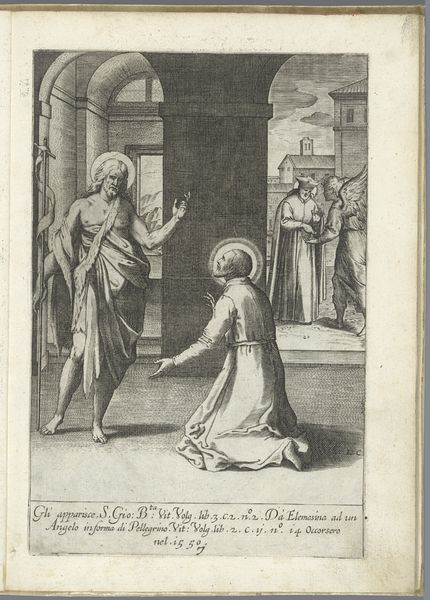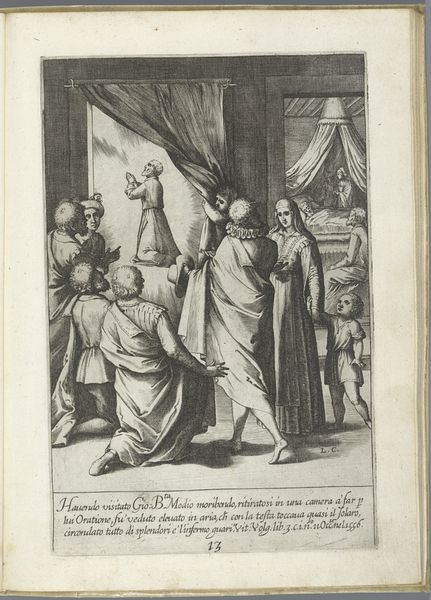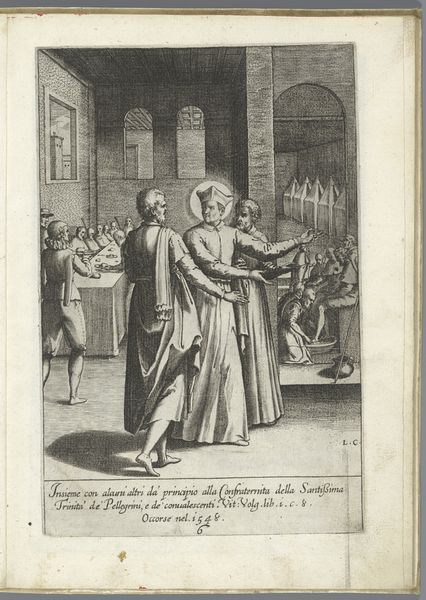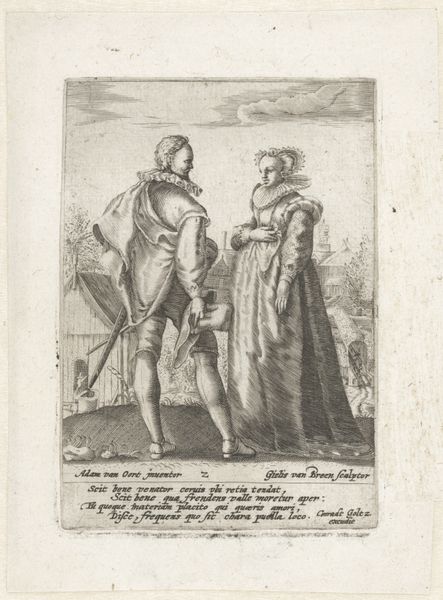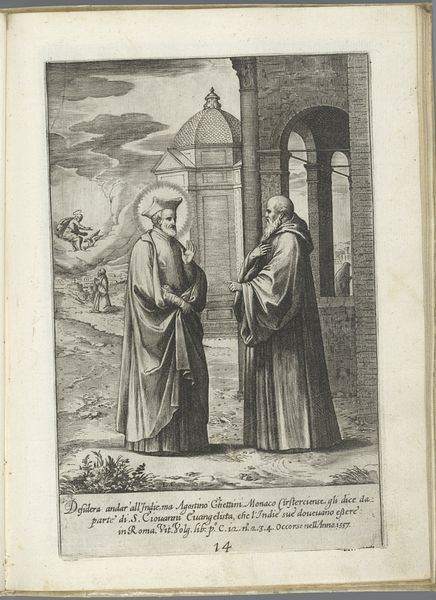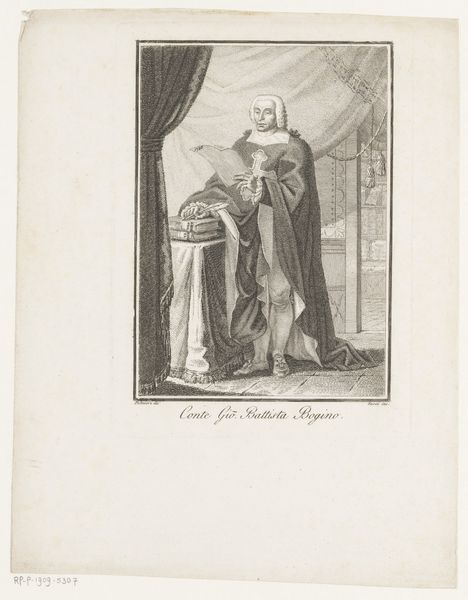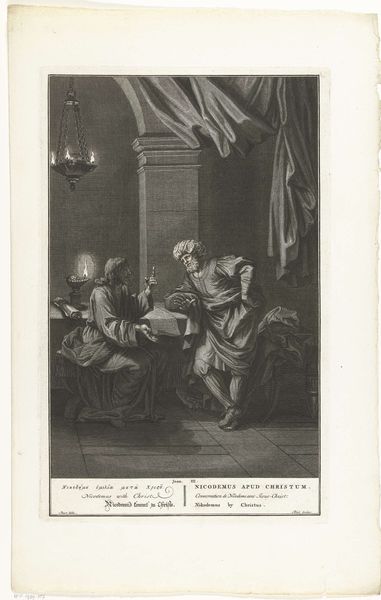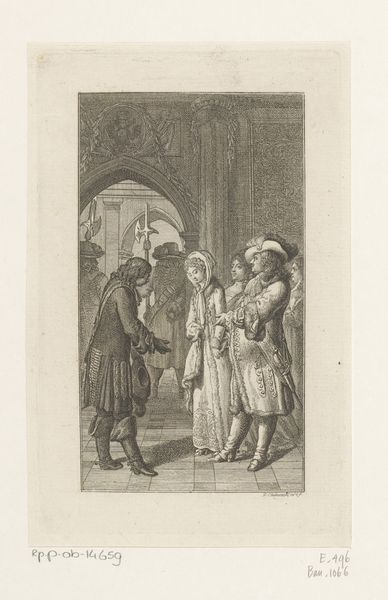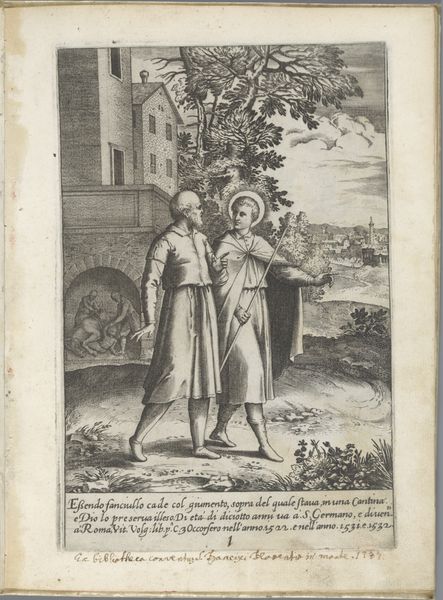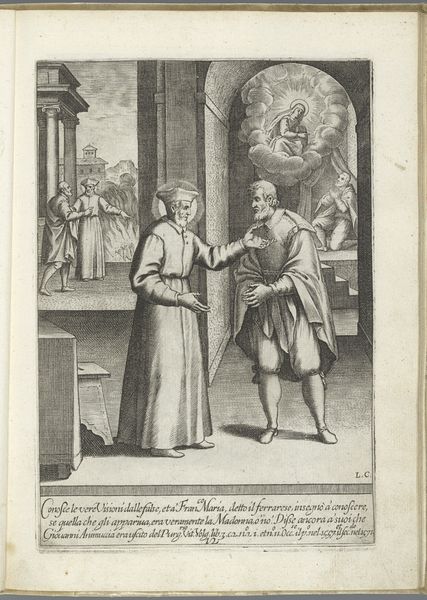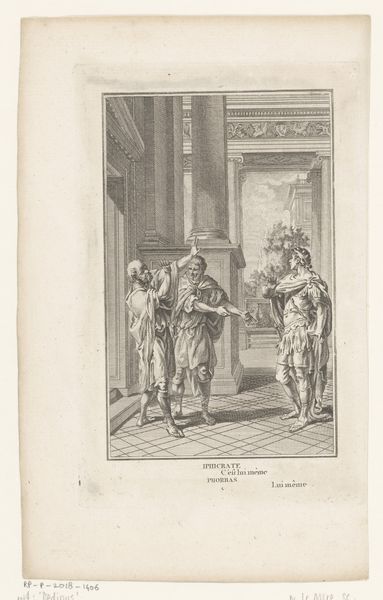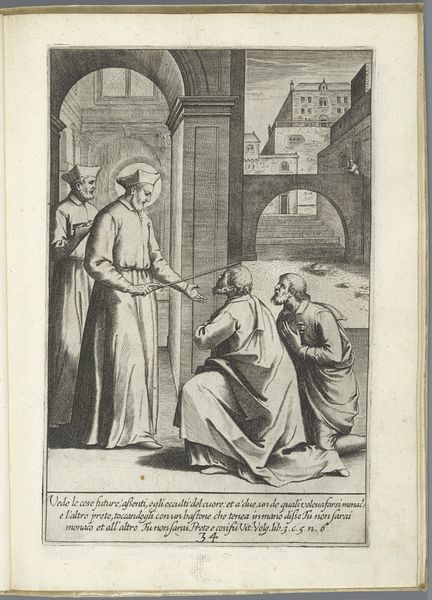
print, engraving
#
narrative-art
#
baroque
# print
#
old engraving style
#
figuration
#
engraving
Dimensions: height 228 mm, width 150 mm
Copyright: Rijks Museum: Open Domain
Curator: What strikes me immediately about this engraving is its stark quality; it's austere, yet somehow hopeful, don't you think? Editor: Indeed! This is "Filippo Neri speekt met Zuster Caterina de Ricci" by Luca Ciamberlano, created sometime between 1630 and 1641. It’s currently held at the Rijksmuseum, a significant example of baroque printmaking. Notice the narrative scene: it captures a moment of communion between Saint Filippo Neri and Sister Caterina de Ricci. Curator: The halos around their heads certainly point to something beyond the earthly realm. They act as clear symbols of divinity and saintly grace—almost beacons in this otherwise lightly defined architectural space. Also, note how Neri is framed by a classic pillar and heavy drapery, as Caterina stands within sight of a skyline; these figures connect earthly architecture with heavenly concerns. Editor: I see this from a socio-political perspective. Consider the period. The Counter-Reformation shaped religious imagery. Prints like this one, circulating widely, were powerful tools. The encounter of Neri and de Ricci presents a kind of spiritual authority and offers what one might call the possibility of accessible divine grace made palatable for public consumption. Curator: I find their gestures interesting, too. Neri’s open palms, perhaps indicative of spiritual generosity, compared with Caterina’s folded hands, conveying humility and devotion, speak volumes on gender roles as seen through Baroque Catholic conventions. But perhaps this simplicity allowed the masses to connect with them more directly. Editor: That's right. These prints played a part in reinforcing the religious values and expectations. This image offers a window into a culture grappling with its faith, visualized and then carefully circulated. I also notice, that Ciamberlano highlights specific places where Caterina de Ricci stands "in Prato of Toscana" and Filippo in Rome. It is a direct symbolic visual that aims at creating connections, relationships that transcend the physical limits. Curator: Considering this print, it has taught me a great deal, and makes me think of visual narrative through powerful symbolism. Editor: For me, its socio-historical dimension stands out as it gives context of a time through which we perceive religious figures' impact on the masses and religious ideology.
Comments
No comments
Be the first to comment and join the conversation on the ultimate creative platform.
